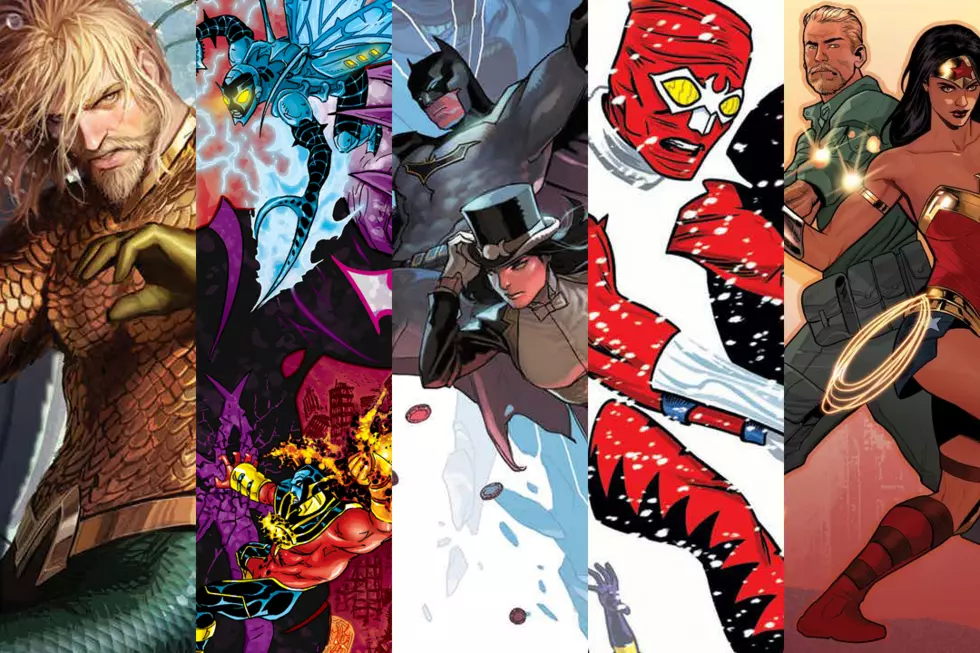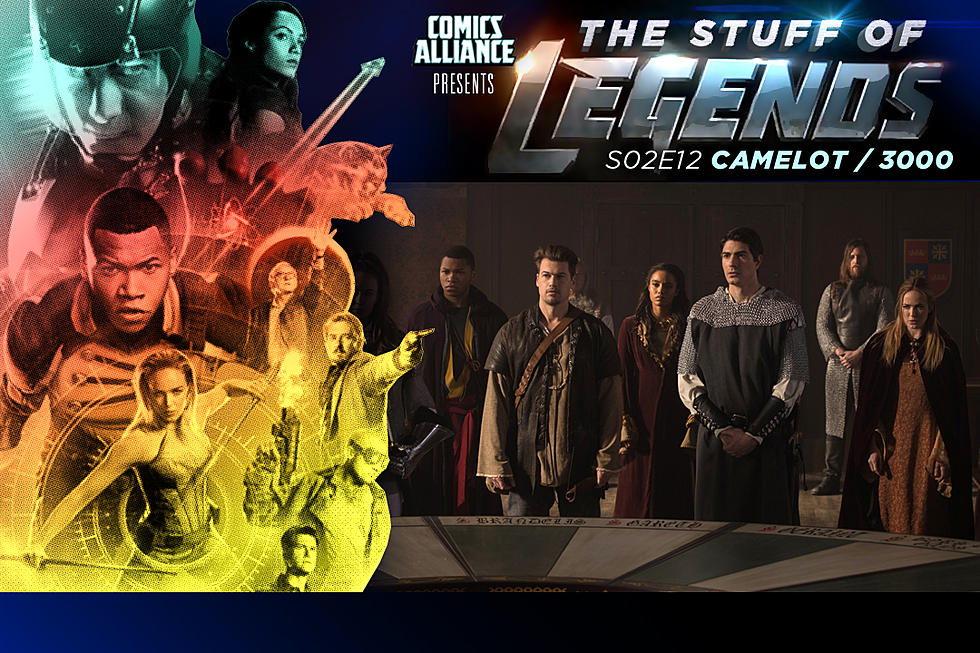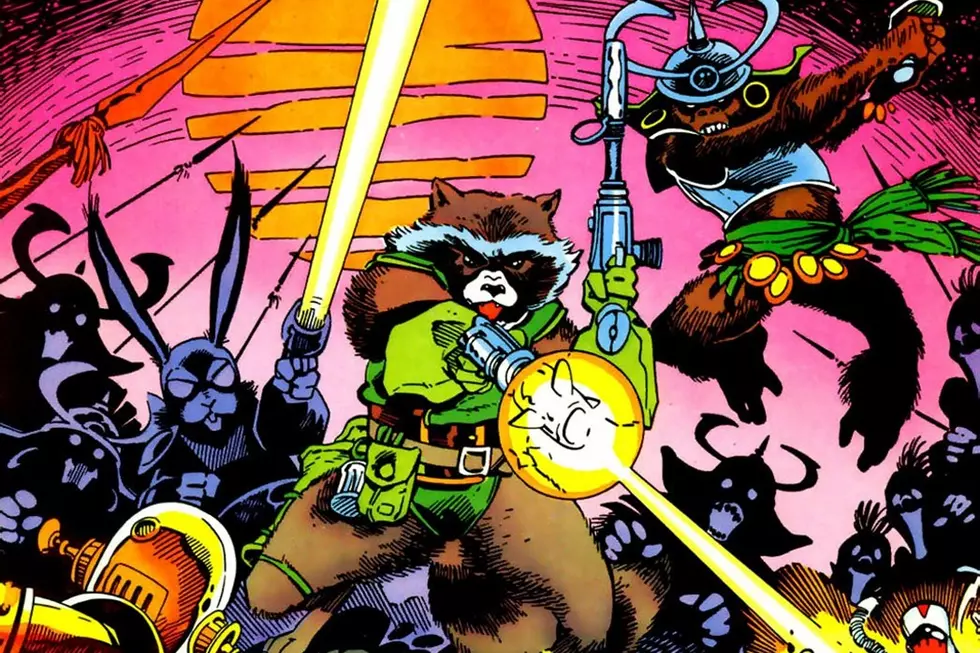
Trans Formation: Remembering Comics’ Fantastical Gender-Fluid Characters
A lot can change in 25 years. When I was a kid in the 80s and 90s, transgender people existed, but they weren’t a topic of conversation outside of porn and seedy pre-Springer talk shows. They certainly weren’t on the cover of respectable magazines, or being interviewed in primetime specials. This lack of visibility made it harder for a trans kid like me to understand my own feelings. I knew I was different from other little boys, and that I strongly identified with girls, but I had never seen any evidence that being a girl was a possibility for me.
In fact, my earliest encounters with transgender characters came in Vertigo comics in the mid-90’s, especially Wanda in Sandman and Coagula in Doom Patrol. Wanda dresses a bit like a drag queen (and dies a tragic death), and Coagula is a sex worker, but they both felt like real people, which is not how I’d ever previously been encouraged to view trans people in any medium. Growing up, reading comics has always played a role in my understanding of my own identity and worldview. I certainly wouldn’t say comics had an effect on my gender, but they definitely affected my understanding of gender.
Recently, I’ve been wanting to look back farther than Wanda and Coagula and the mid-90’s. Amidst recent discussions of trans representation in comics, I’ve found myself thinking about what preceded trans characters in comics, before there was any chance of them existing.
What did exist, and what I was paying no small amount of attention to, were characters who changed gender through science fiction and fantasy means. These stories rarely bore any resemblance to the lives of actual trans people (not that I was in a position to understand the difference at the time), but when done well they could still have something to say about the fragility of binary concepts of gender, or about the differences in men and women’s lives. Even when these stories are executed badly, they’re bound to be fascinating to a comics-loving kid struggling with gender identity.
The first comics character I remember who changed gender was the DC villain Ultra-Humanite, a mad scientist who has his brain transplanted from his original male body into that of a beautiful actress. As fascinated as I was by this possibility, it didn’t seem to mean much to Ultra. He went on with his evil schemes and insisted he wasn’t really a woman, despite wearing a slinky dress. Later, Ultra-Humanite would switch bodies again, into a giant albino gorilla, the form he wore when he had a heartwarming Christmas adventure with the Flash on the Justice League animated series.
Perhaps the most famous superhero to change gender was Sasquatch, in Bill Mantlo’s 1980’s run on Alpha Flight. Sasquatch was Walter Langkowski, a handsome scientist whose experiments had given him the ability to transform into a massive super-strong furball who served as Alpha Flight’s muscle. Pretty standard superhero stuff, but Mantlo’s time on the book was all about constant change and avoiding a status quo for most of the characters. Langkowski’s body was killed, and he hung around as a ghost who lived in a robot for a while. Then he had the opportunity to take over a white-furred Sasquatch body that had been vacated by his teammate Snowbird.
Upon returning to human form, Walter found that Snowbird’s legacy was a female body — but not Snowbird’s human body, strangely enough — a tall, white haired amalgam of Snowbird and Walter. Walter took on the name Wanda Langkowski and continued serving with Alpha Flight, while spending most of her time running around in leotards for some reason.
What’s interesting to me now is that Wanda clearly identifies as a woman. She’s sad and confused about not being a man anymore, but she never gives the slightest indication that she still feels like one, or has any dysphoria about her new body. In fact, during her post-transformation medical exam she says she’s “starting to feel feminine,” whatever that means.
Within a world where this kind of transformation is possible, I don’t actually find the lack of dysphoria particularly surprising. Whatever the convoluted circumstances, mystical forces changed Langkowski into a woman. Thus, Wanda is a woman and not a trans man, because that’s what the magic made her. Magic is, to be direct about it, magical.
What frustrates me now is that the story never acknowledges that queer women exist. That Walter’s girlfriend Aurora is not interested in Wanda seems reasonable — she’s the straight Beaubier twin, after all — but her level of disgust and anger seems a bit much. Wanda continues feeling frustrated about her romantic prospects with women, while also flirting with men, but never has a real encounter with anyone, or even makes clear exactly who she’s attracted to. “Maybe the god of love is confused,” she thinks to herself, but it seems more likely that the creative team behind the comic is confused about what sort of love interest would be considered acceptable for a woman who used to be a man, in a Comics Code-approved book in the 1980s.
Mantlo never gives any indication that Wanda has the slightest chance of going back to being Walter. But of course his run doesn’t last forever, and incoming writer James Hudnall wastes no time in immediately and unceremoniously returning Sasquatch to his original male body. Personally, I think it’s kind of a shame. Wanda Langkowski wasn’t a trans woman, but her experience with gender was unique, and I’d love to see what a writer with more sensitivity around queer and trans issues would be able to do with her in the current era. Of course, Sasquatch is probably lucky not to have been a woman during the 1990s, when Marvel probably would have tried to make her furry form sexy.
Speaking of the 90’s, that era introduced the first gender-bending superhero to star in their own book, and to include a change in gender as part of the premise. In Mike W. Barr and Terry Dodson’s Mantra, part of Malibu’s Ultraverse line, the main character is an immortal warrior who has lived for 1500 years by being reincarnated into an adult male body each time he’s killed. When his brethren are permanently wiped out, he finds himself instead reincarnated into a female body with latent mystical powers and a costume that embodies the 90s superheroine aesthetic.
I was excited by this book when it came out to a degree that I was uncomfortable articulating, so I mostly kept it to myself. I wanted to read about a male character who becomes a woman as part of a superhero origin. It seemed like several of my fantasies stacked atop one another. But even my fourteen-year-old sensibilities quickly recognized Mantra as just not very good, and I didn’t stick around for long.
Fortunately by then Vertigo was underway, and I was soon to discover actual transgender characters (and an actual trans writer in Doom Patrol’s Rachel Pollack, although I wouldn’t learn that fact until years later).
It was also around that time that I discovered one of Mike Barr’s earlier, better works, Camelot 3000, which he created with Brian Bolland in the early 1980s. That book also features a subplot about gender identity in the form of Sir Tristan. Tristan is a male knight reincarnated in a female body, who struggles with his identity when memories of that previous life are entirely restored.
As a kid, I saw Tristan’s story as that of a man who has become a woman, but in retrospect his narrative more closely resembles that of a transgender man (which is why I’m choosing to use male pronouns — the original text offers little guidance on this choice anyway). Tristan cuts his hair short and wears masculine clothing, and generally resists any attempts to treat him as feminine. The villain offers to restore Tristan to his original form if he betrays the team, but he refuses, although it tears him up to do so.
The reincarnation of Tristan’s lover Isolde is also introduced, and is presented as a queer woman who has no problem loving Tristan in his new body, although Tristan resists. When the series ends, Isolde finally convinces Tristan to go to bed with her, with the idea that they will live happily ever after. Reading this now, with the strength of Tristan’s masculinity in mind, I tell myself that there must be good options for medical transition in the year 3000, and Isolde will surely support him if he decides to go that route.
My life has come a long way since I read these comics for the first time, and so has the culture of comics, not to mention culture as a whole. A handful of transgender characters have been introduced in mainstream comics, but not very many, and not much has been done with them. Marvel Comics in particular could really use a trans character who’s actually human, as opposed to an angel or a Moloid (or a gender-fluid god or Skrull, for that matter). Of course, Marvel’s doing great compared to the recent travesty of Image’s Airboy.
At DC, two writers who peaked in the 80s, Keith Giffen and J.M. DeMatteis, recently tried to introduce an old-fashioned gender-swapped character of the kind I described above, and it was a disaster. Guy Gardner of Justice League 3001 has been brought back to life in a female body, which leads to arguments among the unappealing future versions of Batman and Superman about whether or not it’s okay to want to have sex with Guy.
When culture moves forward, you just can’t go back. Giffen and DeMatteis might claim that their Guy Gardner is something totally different from an actual transgender woman, but the conversation Superman and Batman have about her still reeks of transmisogyny in an all-too-familiar way.
The irony is that this unfortunate story occurs in a book set almost a thousand years in the future. Considering how much things have changed in my lifetime, once 986 years have actually passed I doubt that even an a--hole as big as Batman is going to be concerned about the actual, perceived, or former gender of his BFF’s lust object.
Bigots can try their hardest to resist, and old folks will keep making dated jokes that only seem funny to them, but culture continues to move forward, toward broader acceptance for all kinds of identities.
More From ComicsAlliance




![Sith Versus Rathtars In ‘Star Wars: Darth Maul’ #1 [Preview]](http://townsquare.media/site/622/files/2017/01/Darth_Maul_1_Featured.jpg?w=980&q=75)




